The NVIDIA GeForce RTX 2070 Super & RTX 2060 Super Review: Smaller Numbers, Bigger Performance
by Ryan Smith on July 2, 2019 9:00 AM EST- Posted in
- GPUs
- GeForce
- NVIDIA
- Turing
- GeForce RTX
Meet the GeForce RTX 2070 Super & RTX 2060 Super
Taking a closer look at the RTX 2070 Super & RTX 2060 Super Founders Edition cards, there aren’t too many surprises to be found. Since we’re dealing with a mid-generation kicker here, NVIDIA has opted to stick with their original RTX 20 series reference designs for the new cards, rather than design wholly new boards. This has allowed them to get the new cards out relatively quickly, and to be honest there’s not a whole lot NVIDIA could do here that wouldn’t be superficial. As a result, the RTX 2070 Super and RTX 2060 Super are more or less identical to the RTX 2080 and RTX 2060 respectively.
| GeForce RTX 20 Series Card Compariaon | ||||||
| RTX 2070 Super Founders Edition |
RTX 2070 Super (Reference Specs) |
RTX 2060 Super Founders Edition |
RTX 2060 Super (Reference Specs) |
|||
| Base Clock | 1605MHz | 1605MHz | 1470MHz | 1470MHz | ||
| Boost Clock | 1770MHz | 1770MHz | 1650MHz | 1650MHz | ||
| Memory Clock | 14Gbps GDDR6 | 14Gbps GDDR6 | 14Gbps GDDR6 | 14Gbps GDDR6 | ||
| VRAM | 8GB | 8GB | 8GB | 8GB | ||
| TDP | 215W | 215W | 175W | 175W | ||
| Length | 10.5-inches | N/A | 9.0-inches | N/A | ||
| Width | Dual Slot | N/A | Dual Slot | N/A | ||
| Cooler Type | Open Air (2x Axial Fans) |
N/A | Open Air (2x Axial Fans) |
N/A | ||
| Price | $499 | $499 | $399 | $399 | ||
As I noted earlier, the Founders Edition cards themselves are now purely reference cards. NVIDIA isn’t doing factory overclocks this time around – the high reference clock speeds making that process a bit harder – so these cards are very straightforward examples of what the RTX 2070 Super and RTX 2060 Super can deliver in terms of performance. It also means that these cards no longer carry a price premium, with NVIDIA selling them at the $499 and $399 MSRPs respectively.
Starting with the RTX 2070 Super then, possibly the only material change is quite literally in the materials. NVIDIA has taken the 2080 reference design and given the center segment of shroud a reflective coating. This, along with the Super branding, are the only two visually distinctive changes from the RTX 2080 reference design. For better or worse, the reflective section is every bit the fingerprint magnet that you probably expect, so thankfully most people aren’t handling their video cards as much as hardware reviewers are.
In terms of cooling then, this means the RTX 2070 Super gets the RTX 2080’s cooler as well. At a high level this is a dual axial open air cooler, with NVIDIA sticking to this design after first introducing it last year. The open air cooler helps NVIDIA keep their load noise levels down, though idle noise levels on all of the RTX 20 series reference cards has been mediocre, and the new Super cards are no different. The fact that this reference design isn’t a blower means that the RTX 2070 Super isn’t fully self-exhausting, relying on the computer chassis itself to help move hot air away from the card. For most builders this isn’t an issue, but if you’re building a compact system or a system with limited airflow, you’ll want to make sure your system can handle the heat from a 215W video card.
Under the hood, the RTX 2070 Super inherits the RTX 2080’s heatsink design, with a large aluminum heatsink running the full length of the card. Deeper still, the heatsink is connected to the TU104 GPU with a vapor chamber, to help move heat away from the GPU more efficiently. Overall the RTX 2070 Super has the same 215W TDP as the RTX 2080, so it behaves virtually identically to the latter card. Which is to say that it has no problem keeping its cool.
Since this card is needed for further testing I haven’t shucked the card down to its PCB, but according to NVIDIA the power delivery system is also identical to the RTX 2080. In this respective NVIDIA’s reference designs are solid, and while they won’t be enough for hardcore overclockers, it’s more than sufficient for the kind of overclocking that can be done with the reference cooler. Of particular note, the maximum power target for the card is +20%, which means it can have its TDP increased to 258W. Accordingly, the card is fed by the same 6pin + 8pin power system as on the RTX 2080, more than guaranteeing the card can be fed up to its power target limit.
Finally, for display I/O, the card gets the continuing NVIDIA high-end standard of 3x DisplayPort 1.4, 1x HDMI 2.0b, and 1x VirtualLink port (DP video + USB data + 30W USB power).
GeForce RTX 2060 Super
Shifting gears, for building the RTX 2060 Super NVIDIA has gone the opposite direction, using the RTX 2060 reference design as the base. The 2060 itself wasn’t all that different from the 2080 – and the same holds for its Super variant – but there are a few notable distinctions from the newly minted RTX 2070 Super.
In terms of overall design, the RTX 2060 Super Founders Edition card retains the same design aesthetic – reflective bits and all – but it comes in a smaller package. Overall the card is just 9 inches long, which is 1.5 inches shorter than the RTX 2070 Super. The cooling system has also been simplified a bit – mostly forgoing the vapor chamber – though it still retains the card’s full-body heatsink and dual fan open air cooler.
With a 175W TDP, the card relies on a single 8pin PCIe power connection at the rear of the card for the extra power it needs. Overclockers meanwhile will be able to pump up the power target by 22%, allowing the card’s TDP to be raised to a maximum of 213W.
Outside of its smaller stature, the other big departure for the RTX 2060 Super from its more powerful sibling is in the display I/O configuration. As with the regular RTX 2060, the Super card drops the 3rd DisplayPort for a DL-DVI-D port, giving the card a final tally of 2x DisplayPort 1.4, 1x HDMI 2.0b, 1x DL-DVI-D, and a sole VirtualLink port.


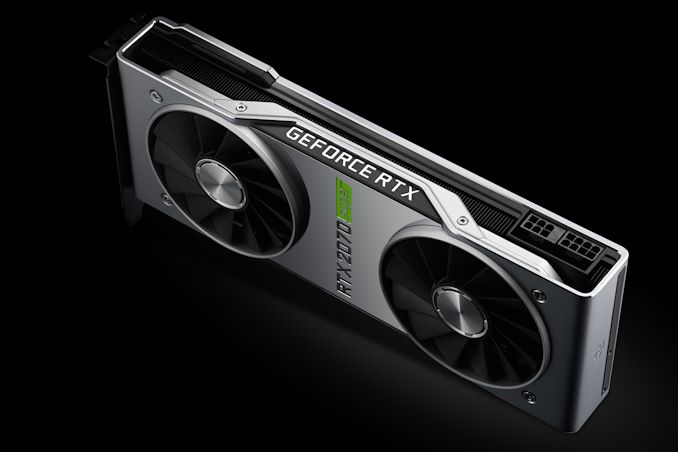
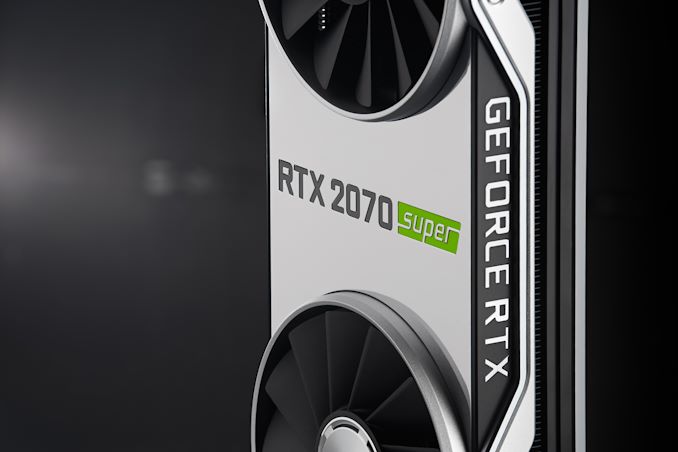
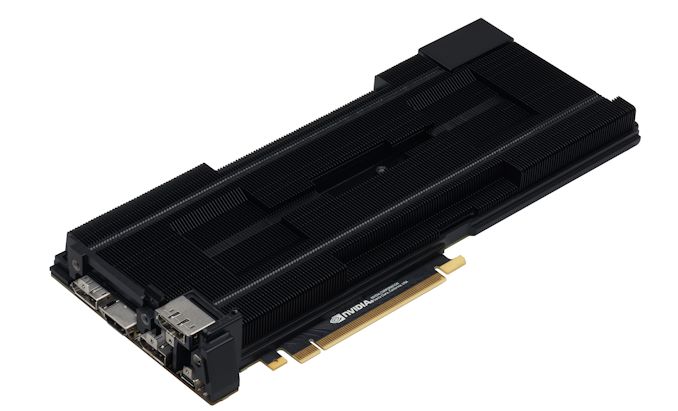

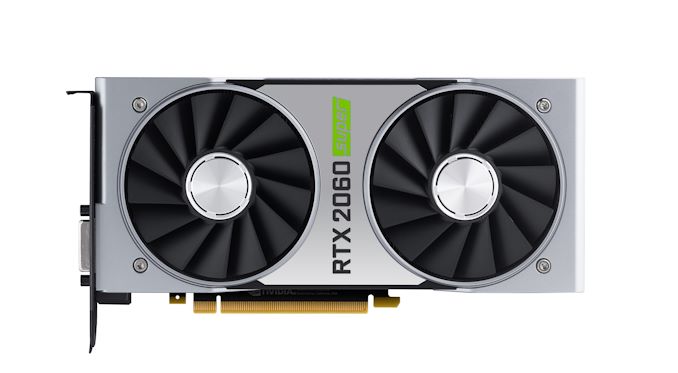
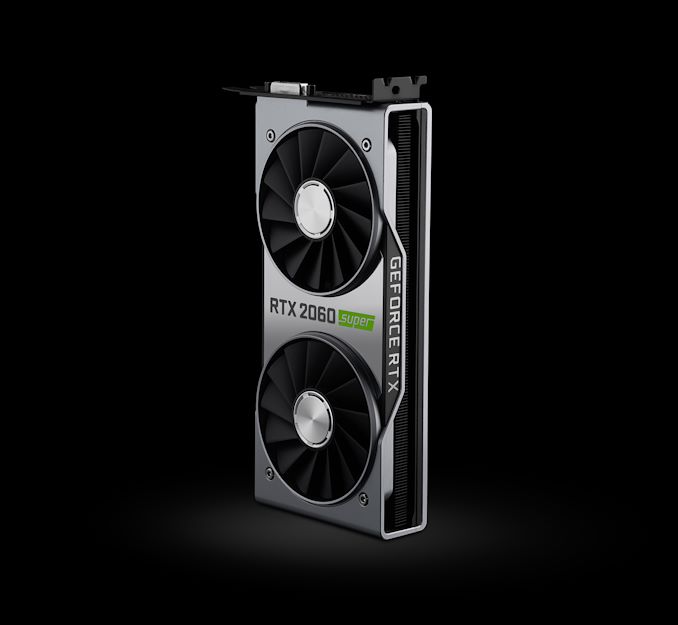









281 Comments
View All Comments
BenSkywalker - Tuesday, July 2, 2019 - link
Running Metro on the ultra setting using an RTX card is painful, RTX mode is *faster* and looks *way* better, why did you do this?Yojimbo - Tuesday, July 2, 2019 - link
They didn't run anything with RTX on, probably because AMD cards don't have DXR drivers, yet, so there is no competition to compare it to. It would take a subjective judgment to say "using XYZ setting with RTX on looks better and runs faster, let's take a look at those numbers." There is a place in the games/hardware enthusiast sphere for some analysis along those lines, but Anandtech doesn't seem to try to fill that niche.BenSkywalker - Tuesday, July 2, 2019 - link
Oh, I must have been confused, I thought this was a review for new nVidia parts, I guess you are saying it's a feels feels article for people who own the lone four year old AMD part.......?Yojimbo - Tuesday, July 2, 2019 - link
Oh, I must have been confused. I thought I was talking to a reasonable person. Guess not, so I won't bother.BenSkywalker - Tuesday, July 2, 2019 - link
Use lower quality settings that are markedly slower, ignore both a significant portion of the die space and the relevant performance implications of said die space and purposefully avoid any RTX benches of an RTX card for an RTX review.That is what you are defending. Reasonable, if you think so :)
Lord of the Bored - Tuesday, July 2, 2019 - link
Benchmarks that can't be run on a wide variety of hardware are meaningless.If nVidia wants to include special features that only RTX cards can utilize, that's fine.
But there's no sense including them in a general-use benchmark, because there's only a tiny handful of cards that can use them, and they're all the same chip anyways.
I'm sure nVidia will be glad to tell you how many RTX Ops(bungholiomarks, whatever) the new cards get. It will remain a meaningless number.
Also, the performance implications of the die space are "lost shaders".
nVidia put this in solely for the compute market and THEN turnd around to try and figure out a gimmick they could sell it to gamers with to obscure the meaningful performance loss.
BenSkywalker - Tuesday, July 2, 2019 - link
Ray tracing is a feature of DirectX 12. Metro exodus is using the DirectX 12 implementation for ray tracing.DXR runs on non RTX cards just fine, simply requires driver support for a DirectX feature.
The ray tracing cores don't move the needle for general compute at all, don't know what helmet head told you that but they have no clue what they are talking about. The tensor cores, otoh, those are very useful for certain compute tasks, they are only used for denoising on the ray tracing side, they aren't the intersection compute units, the feature they bring to the table is DLSS and we can all ignore that forever and that's fine.
The key new feature for the next gen consoles, the big feature every engine developer is pushing for, what had been considered the holy grail of real time graphics for decades, that I don't get why you would ignore in an article with RTX as the subject.
Meteor2 - Saturday, July 6, 2019 - link
If ray-tracing is so amazing... Where's the support?Phynaz - Wednesday, July 3, 2019 - link
Benching lowest common denominator is meaningless. Sorry if AMD can’t keep up.eva02langley - Tuesday, July 2, 2019 - link
Man, what a nice fanboy we got...